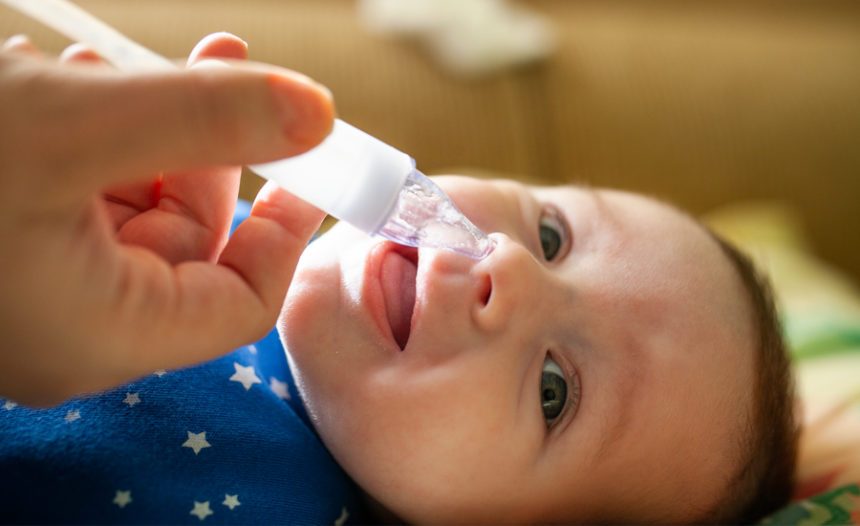When you become a parent, there’s a lot of talk about diapers, feeding schedules and safe sleep. What’s often missing from the conversation is how you will handle your adorable child’s constant runny nose every fall and winter.
“From October to March, one kid might get sick with eight to 10 different viruses,” says UNC Health pediatrician Priyanka Rao, MD.
While congestion and coughing up phlegm can be frustrating for both you and your child, it’s actually a good sign.
“When your child is producing mucus, that’s their body’s natural defense to fight off infections,” Dr. Rao says. “It means their immune system is working, and that’s a good thing.”
Dr. Rao shares some ways you can help your child manage the congestion as the mucus does its job.
What Is Mucus, Anyway?
Mucus is made up of water, salt and gelatinous proteins that are designed to trap and kill any viruses, bacteria and allergens that invade your body. It lines your mouth, nose, throat, eyes, lungs and gastrointestinal tract.
“Everyone has a baseline level of mucus at all times,” Dr. Rao says. “When your body encounters virus particles or bacteria, it ramps up mucus production to create an environment that the virus or bacteria wouldn’t like in an effort to get rid of it. It’s your body’s first line of defense against sickness.”
The Color of Mucus
Yes, it can be helpful to pay attention to the color of your child’s excess mucus (and note when it started). Healthy mucus tends to be clear. As you become exposed to a virus or bacteria, it will change to shades of yellow, green and brown.
“We can’t tell whether the sickness is viral or bacterial based on the color of the mucus—that’s a myth,” Dr. Rao says. “However, the duration of time that you have had excess mucus can help us differentiate if you had a virus that has perhaps turned into a bacterial infection.”
For example, ear infections can develop after having a cold or other virus. That’s because the body made excess mucus to try to get rid of the germs and created an environment that bacteria like.
“The ears are warm, dark and moist, so when you add more mucus in there, it creates an environment where bacteria can thrive,” Dr. Rao says.
How to Clear Your Child’s Mucus
Even though excess mucus is a good sign in a sick child, it can cause discomfort.
Dr. Rao recommends that you intervene only if it is bothering your child, such as causing trouble breathing or sleeping—not if it’s only bothering you.
Below are six things you can use or do to help relieve your child’s runny nose and congestion.
- Use saline spray.
A saline spray is made of salt water that you gently squirt into your child’s nose. It helps thin the mucus and draw it out, and it keeps the nasal passages moist.
- Try a bulb syringe or nasal aspirator.
The syringe or aspirator uses suction to pull snot out of the nose. This is especially helpful in younger children who haven’t learned how to blow their noses yet, Dr. Rao says.
- Turn on a humidifier.
Using a humidifier in the room where your child sleeps helps keep the air moist and thin out the mucus, making it easier to release.
- Steam up the bathroom.
Close the bathroom door, turn the shower on hot and let it run for a few minutes to get the bathroom steamy. Then let your child breathe in the steam (outside the shower, at a safe distance from the hot water) to help loosen the mucus.
- Offer plenty of water.
It’s important to drink lots of water while congested to help thin out the mucus.
- Try nasal irrigation for older children.
If your child is elementary school age or older, you can use a neti pot or sinus rinse to flush out the nasal passages. This technique creates a tingling sensation that some children may not tolerate. Make sure to use water that is distilled or has been boiled and cooled.
When to Contact Your Provider
While mucus can be helpful to fight off infection, it could also be a sign that you need to see your provider. It can be tricky to tell if your child has the common cold or something more serious. Dr. Rao says to contact your pediatrician if your child:
- Isn’t able to drink much water
- Has a fever that lasts more than three days
- Has congestion that is getting progressively worse
- Has symptoms that are getting worse over days and not better
“I always tell parents to trust your gut,” Dr. Rao says. “If you feel like something is off, your pediatrician is always happy to see you.”
Go to your pediatrician’s office or an urgent care clinic if you observe any of the following symptoms:
- Fever that doesn’t respond to fever-reducing medicine
- Inability to keep food down without vomiting
- Not urinating at least once every six hours
- Low energy levels
- Not drinking water or other liquids
Go to the emergency department if your child:
- Has a fever that lasts more than five days
- Has trouble breathing, especially if you notice they are using their ribs and upper abdominal muscles to take in enough air
Need a pediatrician? Find one near you.

